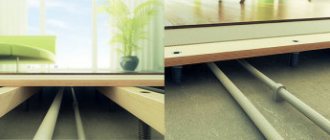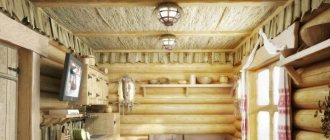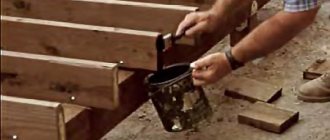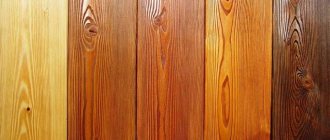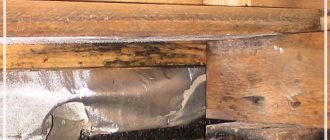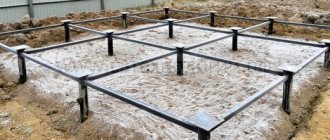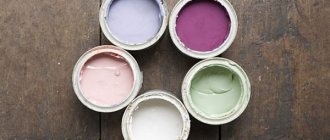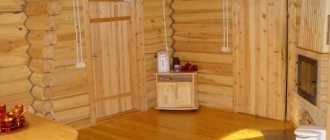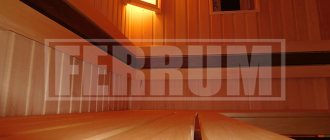For every Russian person, a bathhouse is not just a place where you can have a nice steam bath and wash. First of all, this is a tribute to national tradition and we are not afraid of this word of a special cult, with which numerous Old Russian rites and rituals are associated.
We will talk in more detail about the dressing room - an integral part of the bathhouse itself, and about how to cover the floor in the dressing room.
The dressing room is a place of relaxation, enjoyment and renunciation from the bustle of gray everyday life
How to cover a wooden floor in a bathhouse
Wood will require at least some surface preparation. For a bathhouse, laying the first protective layer is of particular importance. The floor needs to be covered correctly, and most importantly - with high-quality materials. The starting layer creates the base on which all other paintwork materials will be laid. If experiments with impregnations and varnishes are still allowed on the outer part of wooden walls, then inside the first layer of varnish or paint for the floor in the bathhouse must be laid in compliance with all the subtleties of technology.
It is impossible to sand or cut off poor-quality paint or impregnation with a grinder, as this can completely ruin the wooden floor. Removing varnish, paint or impregnation will be expensive and difficult.
The classic technology for painting a bathhouse floor is as follows:
- First of all, a layer of antibacterial protection of wood is applied, the number of passes may vary, depending on the density and degree of surface treatment; on average, it is enough to cover with two layers laid in mutually perpendicular directions;
- Priming a wooden floor. Even the highest quality and most durable paint intended for wood processing can swell with bubbles if there is no normal adhesion to the base;
- Applying a paint coating or just a varnish base.
In addition, you will need to use a wide and narrow brush and a plastic spatula. The process of choosing a tool in order to cover a wooden floor in a bathhouse or sauna deserves special attention. A spray bottle and a paint roller are definitely not suitable; in both cases, you can cover wooden floorboards with paint or a varnish composition quite quickly, but at the same time, quite a lot of air bubbles remain under the protective layer, due to which the paint quickly peels off.
The prepared surface can and should be coated only with a brush.
Advice! It is best to cover it in two layers, in this case the thickness of the layer does not matter, it is important that the protective coating is as dense as possible.
A good paint for a wooden floor has a fairly liquid, low-viscosity consistency, due to which it adheres very well to the surface.
Is it possible to paint the floor in a bathhouse?
It is clear that if you have a strong desire and under the influence of advertising, you can paint the floor inside a bathhouse with almost anything, from water-dispersion paint to oil-based paint. At the same time, the bathhouse is considered one of the most difficult in relation to the correct use of paint and varnish material. There are two serious reasons for this:
- Wood responds differently to different varnishes and organic bases used in paint compositions. For example, acrylic and polyurethane paints require a wood floor to have natural moisture. In other cases, the boards must be primed, otherwise it will definitely not be possible to cover the surface with paint;
- With any bath structure, the floor, wooden or concrete, no matter what, experiences increased stress from excess moisture and temperature changes.
The boards pick up moisture and can expand, causing the paint or varnish to peel or flake off the wood base. The problem is more serious than it might seem at first glance, for example, in the summer, when heating a bathhouse to 60°C, the wooden floor heats up to only 20-30°C, the difference with the outside air temperature is relatively small, so there is nothing to worry about.
Floor varnish must be heat-resistant and plastic at the same time
It’s a different matter if we are talking about a country bathhouse, which is heated once or twice a week. In winter, there is often a temperature difference from -30 to +40-60°C. If we add to this the effect of moisture, it becomes clear that a wooden floor experiences enormous tensile or compressive loads.
Important! Painting the floor in a bathhouse is important and necessary, but at the same time, the paint material itself, after drying, must retain a certain density and elasticity, otherwise after a couple of seasons the varnish or paint layer will have to be removed, and the wooden surface of the floor in the bathhouse will have to be seriously repaired.
Antiseptics for bath floors
The first thing to do is sand and coat the floorboards with a protective water-based bioseptic solution. There are quite a lot of products on sale for the bioprotection of wooden bathhouse structures; there will be no problems purchasing them. It is better to take imported compounds from the island. You can, of course, cover the floor in the bathhouse with budget Senezh, but given the fact that you will have to work and breathe the mordant for quite a long time, it is still better to take a composition that is safe for health.
To cover the torrential floor of Senezh it will take twice or three times as much
Why water-based? Water is best absorbed by the surface of a wooden floor due to the specific structure and the presence of a large number of pores in the wood. Neither oil nor varnish penetrates that deeply, so covering with an aqueous solution of salts means making the floor at least 4-5 mm deep closed to pathogenic microorganisms.
Before covering with impregnation, it is advisable to sand the floor surface with fine sandpaper in order to “open” the top layer of wood. Before being coated with a primer, the wooden floor is subjected to artificial veneering. This is an operation very similar to polishing. Essentially, the floor of the bathhouse is sanded with a rapidly rotating felt wheel mounted on the shaft of a grinding machine. As a result, the impregnating materials are sealed inside, the surface acquires a smoother appearance, and the consumption of primer and paint is significantly reduced.
The method of facing floors in a wooden bathhouse was widely used 100-150 years ago, when there were no salts, mordants or bioprotective solutions; the floorboards had to be, as they say, cauterized to make them more durable.
It is necessary to cover all floors in the bathhouse with bioseptic solutions, from the steam room and dressing room to the entrance to the room.
How to paint the floor in a bathhouse
Choosing the right paint option is easy. First of all, quality is important. Therefore, if possible, it is best to purchase paintwork materials produced by Tikkuril, Belinka or Eurotex. If you cover a wooden floor according to technology, then the difference will not be big.
When choosing paint for the wooden floors of a bathhouse, it is important to follow two unwritten rules:
- In rooms where people walk mostly barefoot, “soft” coatings are needed, for example, for washing and inside the steam room, it is best to paint with oil or wax compositions, for example, Supi Lattiaoljy from Tikkurila. This is a water-soluble oil-based suspension that penetrates well into parts. If you need to save money, the floor can be covered with acrylic paints or urethane-alkyd enamels;
- The harder the protective layer of paint is after drying, the denser and at the same time more slippery the floor will be. Therefore, it is better not to use varnishes and paints that give gloss inside the bathhouse on wooden floorboards.
You should not even try to paint with epoxy paints or any compositions based on epoxy polymers. The coating will be durable, but hardly safe and easy to use.
In addition, it is necessary to take into account the design of the floor; if it is assembled according to a pouring scheme, then the lower part or drainage pads are covered with rubber paints or waterproofing compositions. The upper level of the floor or wooden grate can be coated with alkyd-urethane or acrylic compounds. This part is usually cleaned regularly and thoroughly auditioned, so there is no threat to the wooden floor parts.
Bathroom floor varnish
Of all the possible options, Finnish yacht varnishes and special heat-resistant compositions, such as Tikkurila Unica Super, are most often used. This is a semi-gloss varnish with a pre-primer.
Even the floor in the washing compartment can be covered with an alkyd composition, since the protective layer is completely non-slip. According to most users and owners of wooden saunas, the floors in the bathhouse will have to be treated at least once every 4-5 years. Acrylic varnishes can last a little longer, but they lose their appearance noticeably earlier.
Features of the problem
A classic Russian bath involves taking a bath procedure in an environment of saturated water vapor at temperatures up to 65 degrees.
High humidity at this temperature promotes rotting of almost any material, especially wood. Of course, not all bathhouses are in the same conditions. In general, the bath floor is under aggressive influence. Hot water mixed with detergents is poured onto it from above, water vapor condenses, creating a significant mechanical load, and all this at high temperatures. The influence from below is exerted by the soil: soil moisture, low temperatures in winter.
No less important are the specific operational requirements: preventing bare wet feet from slipping, a warm surface, an aesthetic appearance, and the ability to easily clean from contamination.
wood has low moisture resistance and is susceptible to active rotting in sauna conditions, which requires protective measures to be taken. Concrete floors are also fairly common structures. They are also subject to destructive processes, and operating them without a floor covering is generally uncomfortable. The use of tiles for flooring is becoming increasingly popular.
Concrete floors are also fairly common structures.
Coating concrete floors
Unlike wooden floorboards, a concrete base remains insensitive to moisture in any form, as well as temperature changes. Concrete floors in bathhouses are made relatively rarely, and only if the problem cannot be solved by protecting and waterproofing the base. Before covering the screed with a protective varnish layer or applying paint, the concrete floor must be carefully leveled horizontally, otherwise water will collect in puddles in several places.
On concrete floors, leveling the surface is more hassle than painting.
Next, you should cover the floor with a primer. If you compare concrete with wooden floorboards, the situation is the opposite. The cement-sand base turns out to be little sensitive to temperature, while the varnish or paint on its surface under the influence of water and hot steam can peel off. Therefore, it is always necessary to prime.
Next, we lay out the main layer of paint, you can take latex or butyl-styrene compositions or the popular Tikkurila Betolux Aakva Base, designed specifically for rooms with high levels of humidity and temperature, like in a bathhouse.
How to install a foundation
Installation of the foundation begins with the removal of the top layer of soil.
At this stage we highlight the following actions:
- digging a trench 0.5 m deep and 0.3 m wide;
- filling the trench with compacted sand;
- installation of formwork;
- placement in the resulting structure of reinforcement 0.8-1 cm, along the edges of which galvanized steel pins are fixed;
- concreting.
After the concrete has completely dried, we cover it with roofing felt. Now you can add the dressing room itself.
Bath flooring
What you shouldn't try to do is cover all the floors in a bathhouse with the same type of paint. Firstly, the savings that are usually claimed in this case turn out to be absolutely meager, and secondly, in different rooms there are completely different regimes, which means that the requirements for covering a wooden floor are also different.
How to cover the floor in a bathhouse vestibule
In this case, there are two options - use inexpensive alkyd enamels or try to protect the wooden floor with more durable polyurethane or acrylic paints. If there is a wood-burning stove in the dressing room, then it is better to use the second option. In addition, for rooms with stoves or fireplaces, the floor cannot be covered with polyvinyl chloride and rubber materials.
According to reviews, most owners prefer to use inexpensive water-dispersed and alkyd materials in their bathhouse. The calculation is very simple, it’s easier to cover a wooden floor with a fresh coat of paint once a year and have a great look than to spend money on very expensive but safe silicate coatings. It is clear that with this approach, the interior inside the bathhouse looks very attractive, but the floor and wooden floorboards practically rot under a thick layer of enamel, which does not protect at all from moist air.
How to paint the floor in a bathhouse in a washroom
Two types of paints and varnishes are best suited in the washing department:
- You can paint it with quite expensive, but very beautiful and durable polyvinyl chloride paints. The protective layer can withstand any detergents, powders and soaps; the wooden floor under such paints and varnishes lasts in the bathhouse for quite a long time, since PVC is absolutely plastic and does not allow moisture to pass through, even when completely flooded with water for a long time;
- Butyl styrene paints protect any wooden surface well from moisture, provided that the protective coating is applied to the wood without old paints and varnishes.
Before covering the floor in the bathhouse with a protective layer, the surface must be cleaned and dried with a hairdryer at 70-100°C.
Rubber paint is only suitable for concrete
If the washing room has a concrete floor, then acrylic-silicone or epoxy materials can be used.
How to cover the floor in a steam room
For a very difficult, humid and very hot steam room atmosphere, we can only recommend special paints based on alkyd-urethane compositions. They are not distinguished by high decorative qualities, but at high temperatures they ideally withstand wear and contact loads.
In addition, even over time, varnish and paint do not lose their plasticity, do not peel off or “glaze” to the state of tiles. At the same time, they remain safe and do not emit any harmful substances into the atmosphere in the bathhouse.
Insulating the dressing room from the outside
Ceiling
Upon completion of insulation, work begins on finishing the dressing room. Usually it is covered with wooden clapboard, taking into account the unique design and style of the bathhouse. When covering the floor, the first step is to lay the beams on the waterproofing layer. And again, the entire tree needs to be treated with a water-repellent solution.
You need to fix the floorboard to the beams using self-tapping screws using the tongue-and-groove system. It would be a good idea to install a rubber coating on top of the boards. After the floor is covered, we proceed to finishing the ceiling and then the walls. You can sheathe walls in different ways. So, you can make clapboard cladding horizontally, vertically or diagonally. This is where your imagination comes into play.
The exterior cladding of the bathhouse must match the style of the entire finishing of the bathhouse. Frame buildings made of wood look beautiful and aesthetically pleasing without additional finishing. Therefore, the bathhouse frame can be left in this form. Varnishing is an important final stage in working with the outer surface.
When choosing a paint, we settle on the one that is intended for exterior work on a wooden surface. Insulation of the dressing room and proper ventilation maintain a favorable microclimate in the steam room. Due to the high humidity in the bathhouse, do not forget that organic materials need to be treated with moisture-resistant compounds.
Infrared panel
Another modern option for floor heating is an infrared panel. It can be placed directly under the outer covering throughout the room or in a specific area. When electrical voltage is applied to this panel, it begins to emit infrared rays, which heat not the air, but the person himself who is in the field of their propagation.
Backfill
The next step is to lay thermal insulation between the resulting joists. If roll or tile material is used, the racks must be sealed with a film with an adhesive layer.
The material is attached to the joists using a furniture stapler with the edges placed on the timber. The ceiling on the walls is made about 15 cm high. If expanded clay is used, it is poured directly between the joists in a layer of about 20 cm and compacted tightly. It is necessary to lay 2 layers of waterproofing on top of the thermal insulation layer, after which a layer of vapor barrier is laid, with the foil layer facing up. The rolled material is laid with an overlap of 15 cm, and the joint is sealed with a film with an adhesive layer.

